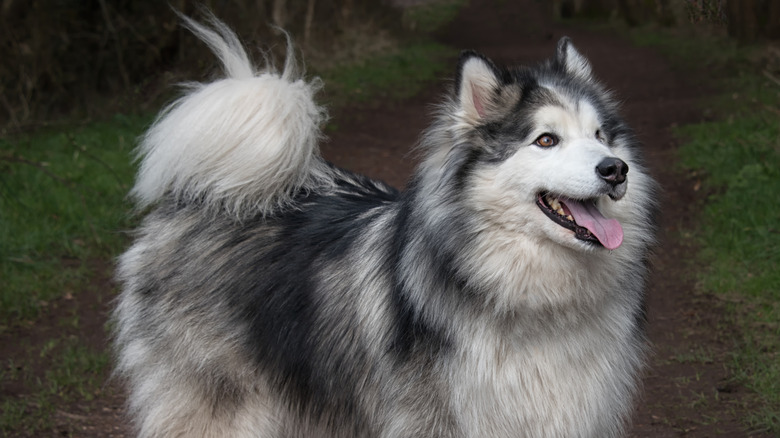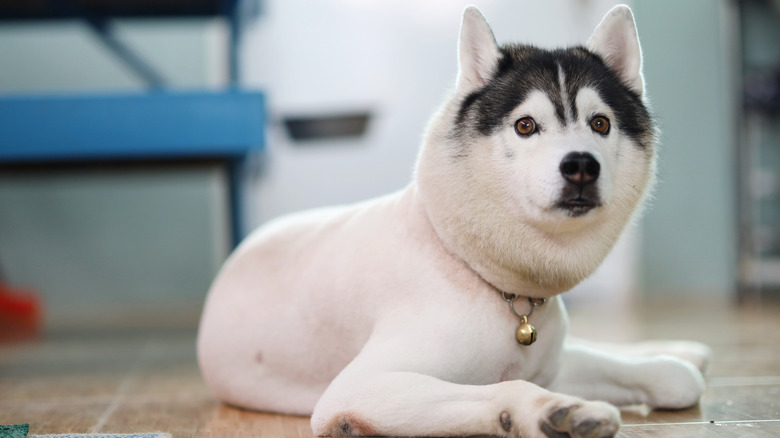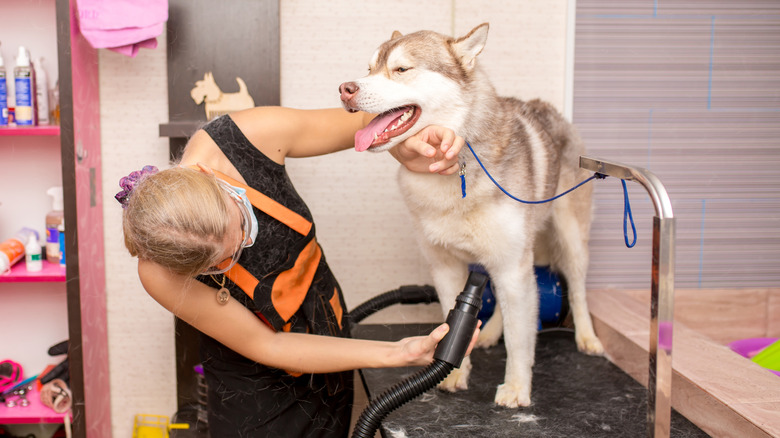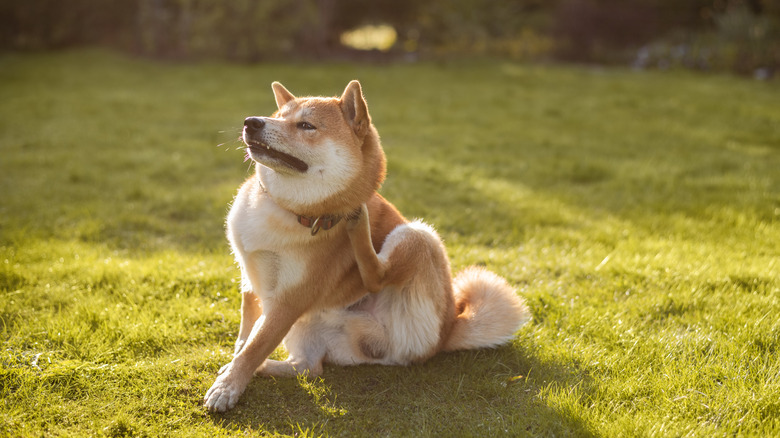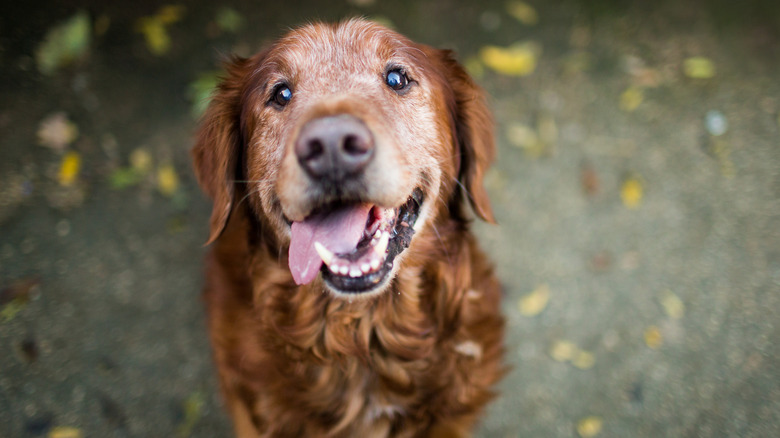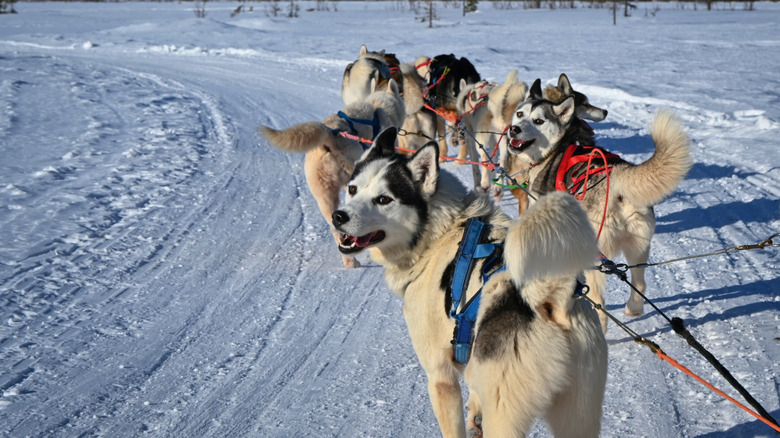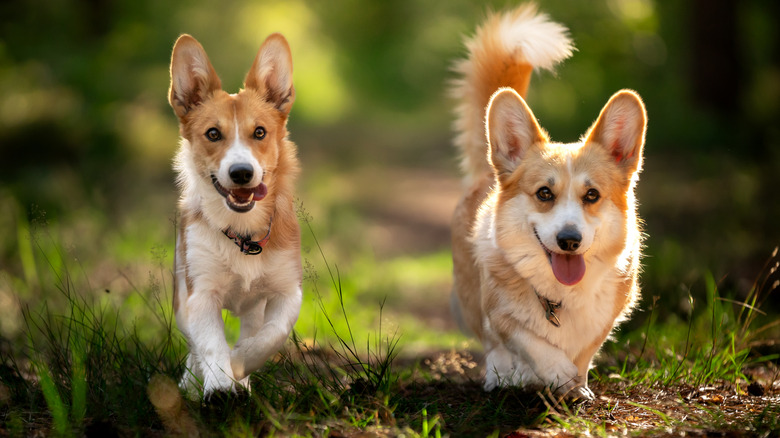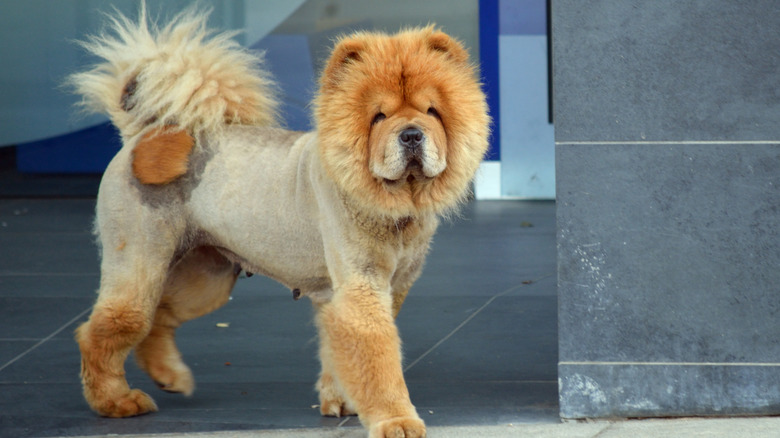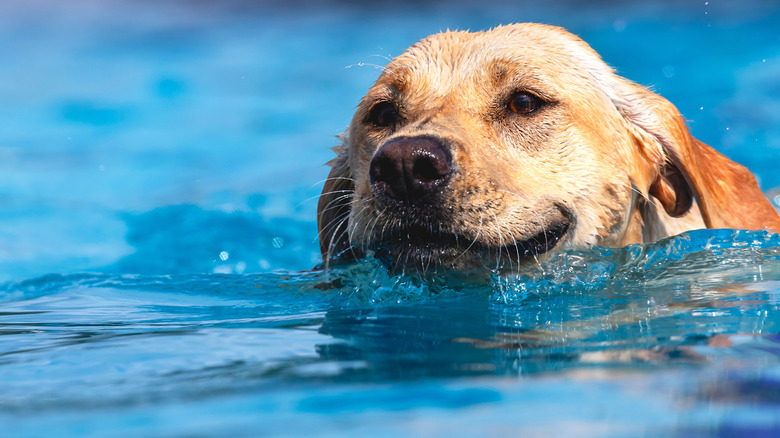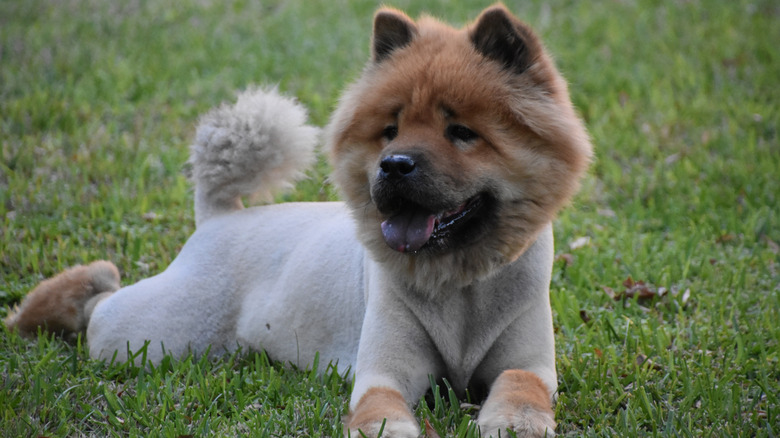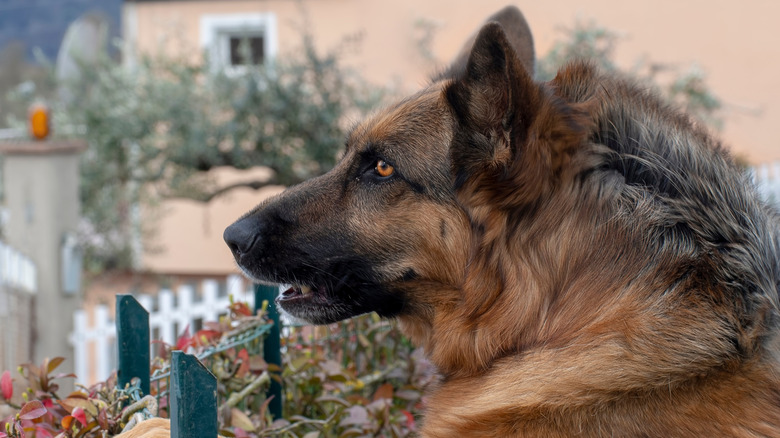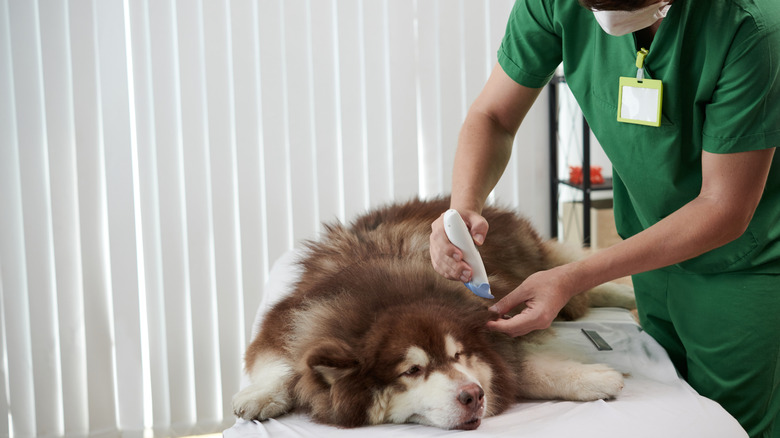11 Reasons You Should Never Shave Double-Coated Dog Breeds
Your dog's double coat acts as a shield that protects them from sun exposure, inclement temperatures, and external parasites. Think of the term "double coat" as "double reinforced". A dog's topcoat comprises long guard hairs that repel dirt and water. Beneath is that the undercoat, wool-like fur that traps cool air in the summer and offers insulation in the winter.
Even the best sun-protective dog clothing can't offer the same benefits as your canine's natural double coat. Now imagine removing that protective shield by shaving it off. Not only could your dog's fur take months (or even years!) to grow back, but in the meantime, they'll be exposed to many health risks, from skin cancer to hypothermia. They may also develop behavioral problems in response to stress or increased sensitivity.
It's rarely a good idea to shave your double-coated dog. Veterinarians may only turn to shaving as a last resort if a double-coated dog is severely matted and in pain. Every aspect of your pup's body, from their organs to their fur, works in harmony to keep them happy and healthy. Shaving their coat disrupts how their bodies have naturally adapted to their environment and can have major consequences. There are only a handful of pros compared to a truckload of cons when shaving double-coated dogs. Just like we need clothes, certain dogs need double coats. It's all part of adapting to changes in their environment and keeping their bodily systems stable.
1. Exposed skin could increase sunburn and cancer risks
Just like humans, dogs can get sunburned and even develop cancer and other skin conditions from prolonged sun exposure. Certain hairless breeds and smooth-coated canines, such as Chinese crested and whippets, are more likely to suffer these conditions because of their thin or non-existent coats. Dogs experiencing patchy fur, hair loss, or baldness are also at an increased risk.
A double-coated pup has no protection from the sun and its harmful ultraviolet rays. If owners don't take appropriate precautions (such as applying dog-friendly sunscreen on outings), their canine could develop various skin cancers, such as squamous cell carcinoma. A bald or thin-furred dog could also develop solar keratosis, which is a precursor to malignant tumors.
If you must shave your double-coated dog, consider whether your local climate is conducive to this decision. For instance, if you live in a sunny place like Florida, having your canine constantly exposed to the sun could affect their long-term health. If you live in a more temperate region, this may also influence your decision, though ultimately shaving should only be done out of necessity, such as in the case of a severe mat or as a requirement for a medical procedure.
2. The dog's coat could lose healthy oils
Dogs have oil glands that produce a substance known as sebum, a mixture of fatty acids that keep the skin moist, soft, and flexible. It also keeps a canine's coat shiny and has some antibiotic benefits. Sebum is mostly present near the paws, backside, chin, back of the neck, and tail, according to Merck Veterinary Manual. All dogs produce this oil-like substance, including hairless breeds.
When a double-coated dog is shaved, this can have a huge impact on how its body naturally produces sebum and potentially lead to a host of complications, such as how the oil is naturally distributed as the coat grows back in. A canine's coat is a well-oiled machine; the skin, hair follicles, and individual strands of fur work like cogs to ensure that the coat retains a healthy volume, texture, and sheen. Shaving a double-coated dog disrupts how this machine works and can have long-term effects on your pet's appearance, comfort, and overall well-being.
3. Bloodsucking insects can bite shaved dogs more easily
Buffalo gnats, mosquitos, and ticks have easier access to a shaved dog's skin than they would, say, a Samoyed in its natural fluffy state. Exposure to insects can subsequently increase your canine's risk of contracting diseases transmitted by bloodsucking insects and other external parasites. For example, mosquitos carrying heartworm larvae can transmit these parasites when feeding from host dogs. The worms mature inside the canine's body and can grow up to a foot long, infesting their circulatory system and causing respiratory complications. While dogs can recover from heartworms, it takes months to complete the intense treatment.
Shaved dogs in certain areas of the United States (such as New England) can be exposed to ticks, small arachnids that can survive inconspicuously for days. Double-coated dog breeds can still get ticks, but because of their topcoat and undercoat, they have to work harder to reach the skin. These parasites can transmit Lyme disease, a bacterial infection that can affect the nervous system, heart, and joints. Bloodsucking insects target dogs with thin fur or bald patches, as they offer fast, convenient feeding. While it may be easier to spot an engorged tick on a hairless canine, it only takes seconds for a buffalo gnat or a mosquito to bite.
4. Sun exposure and high temperatures could cause heatstroke
It's a myth that double-coated dogs should never spend time outdoors in the summer. In fact, many breeds, such as Siberian huskies, chow chows, and Labrador retrievers, thrive while swimming or running around on a sunny day. A double-coated canine can still have its day because its undercoat traps cool air and holds it close to the skin. This works in combination with panting and a process known as vasodilation, in which the blood vessels expand and bring blood closer to the surface, working to cool the dog down further.
Unfortunately, aside from these adaptations, dogs aren't adept at dissipating body heat. A double-coated pup that can only rely on vasodilation and panting (rather than vasodilation, panting, and its temperature-regulating double-coat) could experience heat stroke when temperatures rise. This condition may develop when a dog's internal body temperature goes beyond 105 degrees Fahrenheit.
Heat stroke can prove fatal if a dog's symptoms aren't spotted and promptly addressed. Signs can include drooling, dilated pupils, and muscle tremors, per the American Kennel Club (AKC). While relocating your dog to a cooler spot could alleviate their symptoms, it's best to ensure your pup doesn't experience this condition in the first place. Prevention is key to safeguarding your pet from extreme heat –- and that includes keeping their double coat in its natural state!
5. Hypothermia can strike shaved double-coated dogs
Most people don't associate fluffy double-coated dogs with hypothermia, usually because many of these breeds were created to endure cold climates. While their topcoat works to brush off snow, slush, and icy water, their undercoat works as a built-in heating pad, insulating the canine when temperatures drop. However, a shaved dog without a topcoat or an undercoat will not be afforded this luxury when spending time in the cold outdoors.
When a dog's body temperature drops below 99 degrees Fahrenheit, they're at risk of developing mild hyperthermia, which can cause irregular heart rate, paleness, and loss of consciousness, per the AKC. Moderate hypothermia may start when the body's temperature hits 90 degrees Fahrenheit, and severe hypothermia occurs below 82 degrees Fahrenheit. Short-coated dogs, along with puppies, small dogs, and senior dogs, are at risk of experiencing this condition.
Do your dog a favor: Even if their double coat is shedding hair all over your clothes, furniture, and home, don't shave them. In fact, you have some options for minimizing shedding during the cooler parts of the year. For instance, having your dog wear a coat or jacket could capture some of the fur they shed while warming up indoors after a walk. You can also use a slicker brush, undercoat rake, and pin brush to capture loose fur before it gets stuck to those new black pants.
6. Low-to-the-ground dogs could get cuts and other wounds
It's tough being a double-coated dog that stands just a few inches above the ground. There's the risk of exposure to broken glass, thorny plants, and shrubs with spiky leaves. Thankfully, armed with a topcoat and undercoat, many small double-coated dogs are able to go on walks and repel debris like water off a duck's back. Shaved, small double-coated canines, however, are vulnerable to various hazards without their fluffy shields.
For instance, imagine a shaved Pembroke Welsh corgi on a nature trail. Normally, its long topcoat would act like a force field and protect its skin. Without this coverage, it may suffer puncture wounds, scratches, and deep lacerations from dangers that most humans wouldn't think twice about. What's more, some of these injuries may not be evident until hours after the initial incident, possibly increasing the risk of infection and secondary complications.
Examples of low-to-the-ground double-coated dog breeds include Pomeranians, shiba inu, and shih tzu. Each of these canines has evolved to have coats that protect them from injury and also play an integral role in shielding them from the elements. Instead of shaving it, you can manage a small dog's shedding with regular grooming sessions and household maintenance. If you find that your small pup sheds excessively, you should consider whether they're allergic to something in their diet. Some of the most common dietary allergies for dogs include beef, corn, wheat, soy, and milk. Here are some other warning signs that your dog might have allergies.
7. Complications from shaving can cause behavioral problems
The phrase "behavioral problems" in this context isn't limited only to aggression; it can also refer to separation anxiety in dogs, excessive grooming, and sudden apprehension that affects day-to-day function. The fact is, every dog reacts to being shaved differently. Some carry on afterward without disturbance, while others become fearful after the event -– and a fearful dog can react aggressively when in distress.
The cause of a dog's behavior problems related to shaving can vary. For instance, a cabube may become afraid of the shaver's buzz and develop anxiety surrounding the object. This may cause a dog to avoid going in the vicinity of where they were shaved, such as a bathroom. They may even refrain from going in the car if they associate the ride with going to the groomer's. Other dogs may develop behavioral issues in response to heightened sensitivity. For instance, a golden retriever may have been content in a house set to 68 degrees. Yet, without an insulating coat, it may feel colder than usual, causing stress arising from discomfort. This sensation can be exacerbated in older canines with dementia that struggle to adapt to sudden changes.
Even if you normally have a well-socialized, well-behaved dog, never underestimate how a seemingly small change (such as being shaved) could transform their outlook. Sure, being shorn likely won't transform a canine's entire disposition, but it could affect how they sleep, get comfortable, and feel certain sensations, such as the cold tile when lying down.
8. Shaved double-coated dogs may become adverse to swimming
Dogs have been bred for many purposes, from companionship to hunting. Some double-coated dogs, such as Newfoundland and Labrador retrievers, were bred as water dogs. As a result, their skin produces extra oil to help repel water and encourage quick drying once on land. Their fur also keeps them insulated. Because of this unique trait, many double-coated canines can't help themselves when they see a swimming pool or body of water -– even if it's freezing. For lots of dogs, swimming is a favorite pastime!
This can all change once a dog no longer has the benefits of its trusty double coat. While swimming, a shorn dog may suffer exposure to freezing water, discouraging them from continuing the activity. Because of the heightened skin exposure, they might not like the sensation of the water without their fur, or they may overreact to touching something while swimming (such as brushing against a piece of kelp).
In the long run, a water dog dissuaded from swimming could face many adverse consequences. For example, a dog that relied on swimming as a form of enrichment could turn to destructive behaviors, like chewing on shoes or generally being hyperactive. A canine straddling the fine line between healthy and obese could gain weight upon losing a favorite form of exercise. A dog's double coat is many things. In the water, it's like a life jacket. Don't take that away!
9. Contact dermatitis can result from skin irritation
Contact dermatitis is a fairly uncommon condition that results from prolonged exposure to an irritant, which can range from laundry detergents to cleaning agents. Dogs are protected by their fur that acts as a barrier between their skin and any allergen. Yet, shaved double-coated dogs won't have this protection, and as a result, they could develop this painful, irritating condition.
Contact dermatitis occurs when a dog's skin comes into contact with an allergen, according to PetMD. The body's immune system deploys antibodies to the affected site, causing inflammation, hair loss, and pustules. Typically, this condition affects where dogs generally don't have fur, such as their muzzle and underbelly. A shaved dog is totally exposed, meaning that they can experience this condition anywhere they come in contact with an allergen.
Diagnosing contact dermatitis can take weeks or even months depending on the source of your dog's discomfort. Your veterinarian may take a biopsy of the affected site and send it off for testing. They may also conduct multiple tests and compare their findings to arrive at a definite answer. Treatment can include medications, topical ointments, and shampoos. Long story short: You can increase your chances of avoiding contact dermatitis by minimizing the bald or nearly hairless areas on your dog's body. Even though there are treatment options, it's best to avoid causing discomfort in the first place.
10. Shorn dogs could experience issues communicating fear and stress
The world of canine communication is more complex than most people think. It goes beyond smells, tail wagging, and playtime; it also involves subtle body language, some of which is conveyed through small changes in your dog's coat. Here's an example. You're at a dog park with your Labrador retriever when an overexcited puppy initiates play too roughly. Your Lab may raise its hackles in response, an unconscious response to stimuli. The hair stands on the ridge of your canine's spine and depending on the context can mean excitement, fear, or aggression. In this context, it may communicate to the puppy that they're playing too roughly.
Without a proper coat, whether because of shaving or hair loss, a dog doesn't have this method of communication. Without being able to convey its intentions, this can lead to miscommunications with other dogs, possibly resulting in fights and heightened reactivity. Over time, this can erode your canine's confidence and make it fearful of interactions with others. It can also cause an over reliance on you for comfort, which can spiral into separation anxiety. Needless to say, your dog relies on their double coat for much more than you realize.
11. Post-clipping alopecia could cause patchy fur
Post-clipping alopecia can occur after a double-coated dog is shaved. Researchers are unsure of what causes this condition except that it interrupts the hair follicles' natural growth cycle because of sudden changes in density. Consequently, canines may experience wispy hair regrowth, bald patches, and discolored skin. They may also have hair regrowth that's a different texture and density than its original composition.
It can be difficult to reverse post-clipping alopecia, as it could take years of regrowth to fully recognize the severity of its symptoms. Upon diagnosing this condition, a vet may prescribe melatonin or levothyroxine, two oral medications that can help with fur growth. They may also recommend certain modes of hydrotherapy, with the water potentially encouraging blood flow and fur regrowth.
